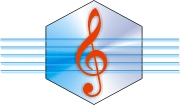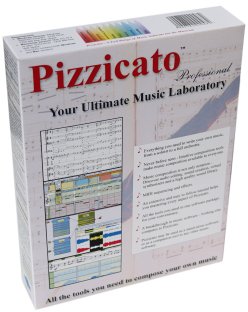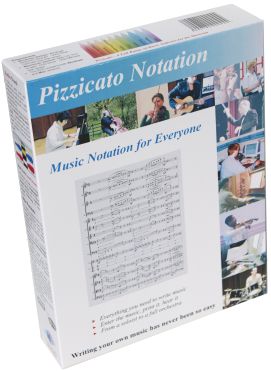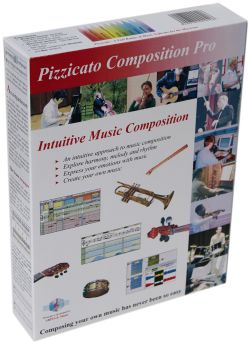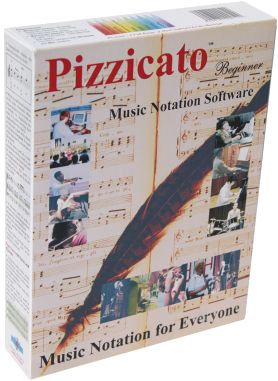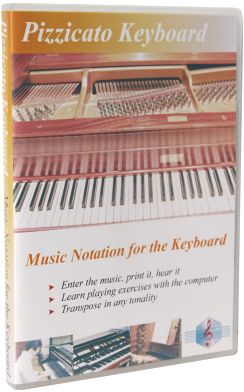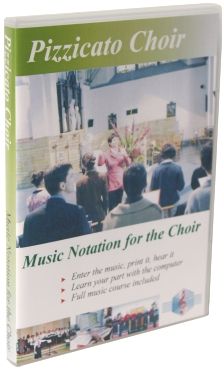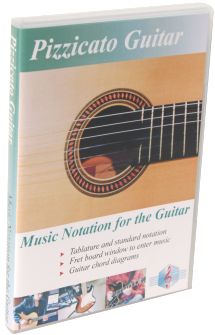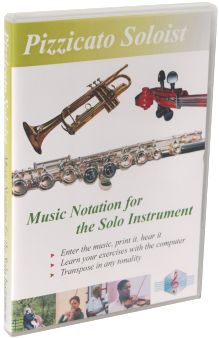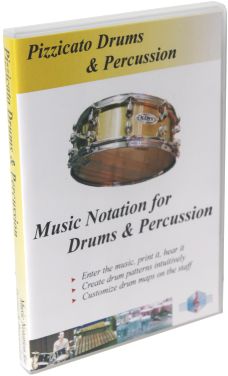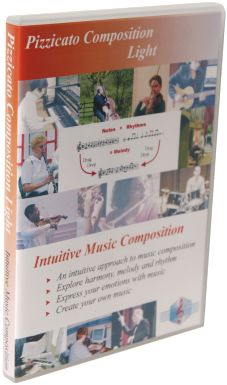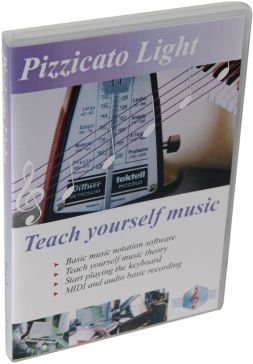History of Pizzicato versions
Here is a list of corrections and new functions that have been added since the release of version 3.0. Please let us know of any problem you may encounter. We correct Pizzicato on a regular basis so that it is as efficient as possible. Thank you for your cooperation.
31 MARCH 2024 : Pizzicato Beta 4.0.12
- About 28 various fixes.
27 JUNE 2023 : Pizzicato Beta 4.0.11
- About 10 various fixes.
27 MARCH 2023 : Pizzicato Beta 4.0.10
- About 12 various fixes.
9 JANUARY 2023 : Pizzicato Beta 4.0.9
- About 20 various fixes.
12 SEPTEMBER 2022 : Pizzicato Beta 4.0.8
- About 20 various fixes.
30 MAY 2022 : Pizzicato Beta 4.0.7
- About 20 various fixes.
27 MARCH 2022 : Pizzicato Beta 4.0.6
- About 30 various fixes.
02 JANUARY 2022 : Pizzicato Beta 4.0.5
- About 15 various fixes. On Mac, the application did not launch properly on Mac OS 64 bits. It seems to work now, at least on our Macs !
26 JULY 2021 : Pizzicato Beta 4.0.4
- About ten various fixes concerning: deletion of a symbol in graphic zoom, bitmap images of custom tools, New palette, graphic offset on Mac (depending on screen), wrongly saved audio configuration, insertion and edition of a graphic on a page, Modification of MIDI data.
01 JULY 2021 : Publication of Pizzicato 4.0.3 as a preliminary version
("beta" version) - Test and adjustment phase. If you like to experiment
and explore, you can download version 4 right now. It is installed
independently of current version 3.6 , so you can use both. If you are
more careful or want a stable and completed version, then it's better to
wait until the testing phase of version 4 has been completed. It will be
announced here, as well as the intermediate corrected versions.
- Pizzicato 4 implements user's most requested feature since the existence of Pizzicato: the possibility to use sound banks in VST3 format. The richness of the many sound banks of the market can now be used in combination with Pizzicato's innovative composition tools.
- Pizzicato 4 is now fully 64-bit software and will therefore run on new versions of Mac OS, including Macs with M1 processor.
- Pizzicato's graphical environment has been completely reviewed.
- See the full description of Pizzicato 4.0 here : Pizzicato 4 Quick Guide...
15 JANUARY 2017 :
- Use of the display technology of Direct2D and DirectWrite from Microsoft to smooth out the display.
- Several crashing bugs corrected during development
2 SEPTEMBER 2016 : Corrective release, version 3.6.2.3, for Mac OS X and Windows:
- Bug corrected: Problem with the opening of some old files
- Bug corrected: Some cases of crash in the use of smart links
- Bug corrected: Temporary view of scores sometimes truncated, notably when used with 2 screens
- Bug corrected: MusicXML import : some cases of unproperly encoded beams are better imported
- Bug corrected: Crash when deleting a staff in linear view
- Bug corrected: Influence of rests inside the smart links
- Bug corrected: Behaviour of the tuplets now better matches their description in the user manuals
22 APRIL 2016 : Corrective release, version 3.6.2.2, for Mac OS X and Windows:
- Bug corrected: Calculation of the exact duration of an octava symbol (or other) in the presence of time signature changes in that duration
- Bug corrected: In some cases, the instrument window disappeared outside the screen to become inaccessible
- Bug corrected: Interference of the "r" shortcut (MIDI cursor) with lyrics entry
- Bug corrected: Some text blocks could not be edited anymore
- Bug corrected: Stem optimization sometime occurred even when disabled
- Bug corrected: Crash in the Harmony & Counterpoint module when using disonnances and delays
- Bug corrected: Volumes of the Papelmedia virtual instruments not initialized properly when loading a score
- Bug corrected: MusicXML import of drums, stem direction not forced up
- Bug corrected: Some MIDI file export not recognized by Windows Media Player
- Bug corrected: Real time arranger (score groups with harmonic spaces) not working with virtual instruments.
- Bug corrected: Crash when deleting a visible score from the conductor view
31 JANUARY 2016 : Corrective release, version 3.6.2.1, for Mac OS X and Windows:
- Correction of bugs that were producing a crash of the application, mainly on Mac. Other small corrections.
31 MAY 2012 : Intermediate release of version 3.6.2, for Mac OS X and Windows:
- New major function: The new Harmony and Counterpoint module is part of the Composition Light, Composition Pro and Professional versions of Pizzicato. It can also be purchased as a standalone module and/or can be combined with any other version of Pizzicato. It gives you the power of being able to compose or arrange accompaniments according to the rules of classic harmony and counterpoint. The results may be use with much advantages in all styles of music. It can also help you to find common errors in harmony and counterpoint exercises (parallel and direct fifth and octaves,...)
- New major function: Developed with the collaboration of Christian Pörksen, specialist in alternative music notation systems, the Alternative Notation module helps you explore non conventional musical notation systems based on ciphers. The HMN-Jianpu (HMN = Hamburg Music Notation) is implemented through the use of 12 symbols (digits and letters), making it easier to learn, to read and to transpose. The traditional Jianpu system can also be used, as well as a few others that can be customized. The software lets you display any existing score already written in standard notation. You can enter the music directly in HMN-Jianpu, in Jianpu and in customized configurations. It displays the music in both standard and ciphered based notation, next to each other. This module is not part of any of the Pizzicato versions, but can be purchased as an independent module, that can be used alone or in combination of any other of the 11 Pizzicato versions.
- New function: A rhythmic variation function has been developed. With it, you can search for a specific rhythmic value and replace it with an equivalent rhyrthmic pattern, including many possible variations. This will keep the same note pitches for the corresponding notes. With it, you can easily improve a structured accompaniment and make it more interesting.
- Improvement: For Pizzicato Light, you can now work in zoom on the screen, with a better precision.
- Bugs corrected: Several problems have been solved with the insertion mode of notes through measure bars. A series of bugs found by users have also be corrected.
29 NOVEMBER 2012 : Intermediate release of version 3.6.1, for Mac OS X and Windows:
- Improvement : Pizzicato handles the stem length and the beaming of notes more standardly.
- New function : You can apply articulation symbols (accent, staccato,...) on a selection of measures or notes. The other main symbols are also better placed when you add them in the score.
- Improvement : Pizzicato imports musicXML 3.0 files as well as compressed musicXML files (with extension .mxl). General improvment of placement of symbols and text after importation.
- New function : You can insert notes and rests in a set of measures, with automatic shifting of the music content through bar lines.
- New function : A playback mode where you can click any point in the score and hear all instruments playing at that exact point.
- Bugs corrected : A series of bugs corrected, as asked by the users.
26 SEPTEMBER 2012 : Minor release of version 3.6.0 Rev 7, for Mac OS X and Windows:
- Bugs corrected: As reported by users, mostly a few cases of program crash resolved.
- Improvement: Import/Export of chords for MIDI files, in the Yamaha message format.
15 JULY 2012 : Minor release of version 3.6.0 Rev 6, for Mac OS X and Windows:
- Bugs corrected: As reported by users, as well as the ASIO compatibility problem on Windows.
11 FEBRUARY 2012 : Minor release of version 3.6.0 Rev 3, for Mac OS X and Windows:
- Bugs corrected: Problem when importing NIFF files, audio playback when some tracks are muted, transposition with the music typing keyboard.
- Improvement: Import/Export of drum maps.
10 JANUARY 2012 : Minor release of version 3.6.0 Rev 2, for Mac OS X and Windows:
- Bugs corrected: A series of bugs corrected, as asked by the users.
3 DECEMBER 2011 : Minor release of version 3.6.0 Rev 1, for Mac OS X and Windows:
- Bugs corrected: A series of bugs corrected, as asked by the users.
21 NOVEMBER 2011 : Release of version 3.6, for Mac OS X and Windows:
- New major function: The music typing keyboard is now available and you can buy it on our site. Version 3.6 fully supports all features of this keyboard, setting up new heights to entering music fast and efficiently. Presently, the keyboard may only be connected on Windows, but we hope to solve the technical problem when using it on a Mac in a near future.
- New major function: Pizzicato can now import an audio WAV file and recognize a melody. It also provides some help to recognize polyphonic music. The window that handles that may also record a melody directly from a microphone and transcribe it into music notation. It also imports MIDI files or record in MIDI with no metronome needed, and help you to transcribe it in standard music notation, buy visually adjusting measures and beats.
- Improvement: by displaying the margins in the page mode, "+" and "-" buttons help you to visually adjust the number of measures per system and systems per page.
- Improvement: lyrics can be center, left or right aligned.
- Improvement: it is now possible to disable the automatic placement of naturals for key signature changes.
- Improvement: the metronom can be exported into the audio WAV file created by Pizzicato.
- Improvement: slurs can now be attached to the starting and ending notes and may be handled automatically, which is specifically usefull when slurs are stretched over several measures.
- Improvement: the tremolo symbol has been added in the ornamentation palette and is played automatically.
- Improvement: when recording in real time in MIDI from an external keyboard, if you use the sound generated by Windows, a latency delay prevents a logical notation, as all notes are shifted slightly according to the metronome used. This can now be compensated for automatically so that the transcription is correct.
- Bugs corrected: a series of bugs has been corrected, specifically affecting the general stability of the program, page layout and printing. Other bugs noticed by users have been corrected as well.
- Improvement : grace notes forming chords are now working properly.
06 NOVEMBER 2011 : Minor release of version 3.5.4 Rev 4, for Mac OS X and Windows:
- Bugs corrected: Stability of page layout improved and a solved problem regarding printing.
31 JULY 2011 : Minor release of version 3.5.4 Rev 2, for Mac OS X and Windows:
- Bugs corrected: A series of bugs corrected, as asked by the users.
27 MAY 2011 : Release of version 3.5.4, for Mac OS X and Windows:
- Improvement: A wizard to automatically compute the playback of repeat bars and signs.
- New function: Partial selection of measures and selection in the graphic editor.
- Improvement: A new intuitive dialog box for assignement of drum instruments on the staff.
- Bugs corrected: Several bugs corrected and various options added, as asked by the users.
21 JANUARY 2011 : Minor release of version 3.5.3 Rev 1, for Mac OS X and Windows:
- Bugs corrected: About ten bugs corrected, as asked by the users.
27 NOVEMBER 2010 : Release of version 3.5.3, for Mac OS X and Windows:
- Improvement: The transposition dialog box is now more easy to use and helps you to transpose a full score very quickly.
- New function: You can use non-latin charsets like Hebrew, Greek, Arabic,...
- Improvement: A new easy way to enter the tuplets.
- Bugs corrected: About fourty bugs corrected, as asked by the users.
22 SEPTEMBER 2010 : Release of version 3.5.2, for Mac OS X and Windows:
- New function: Pizzicato can now directly export your score to a PDF file.
- New function: On Windows, you can use the ASIO driver for audio, which reduces the latency time between you hitting the music keyboard and hearing the sound.
- Bugs corrected: About thirty bugs corrected, as asked by the users, mainly for musicXML export, Audio/Midi synchronisation between audio tracks and MIDI playback, page layout and also for the general stability.
14 JUNE 2010 : Release of version 3.5.1, for Mac OS X and Windows, with the following corrections:
- Bugs corrected: A few dozens bugs corrected, as asked by the users, for import/export of old Pizzicato files, for the page layout and also for the general stability of the program.
- Improvement: The music font has been reviewed by Marco Aragona, our Italian partner. The shape of notes has been improved to be more close to the standards of music editing.
20 APRIL 2010: Minor release 3.5.0 Rev 1, for Mac OS X and Windows
- Bug corrected: A dozen bugs have been corrected, regarding MIDI file import and various graphic aspects on Mac and Windows.
19 MARCH 2010: Release of version 3.5, for Mac OS X and Windows:
- New major function: The page layout function has been deeply improved and is much more efficient, mainly when you modify the page layout and when you add measures and staves. You can insert BMP images as well as custom graphics. Printer and page setups may be customized per page. You may define several printing areas to place measures, which means you can create page layout for booklets and many other custom formats. You can view many pages at once on the screen.
- New major function: The document manager makes the handling of scores much easier. No need to use the Windows and Mac file opening and saving dialogs anymore. Your documents are automatically saved and visible on the left part of the screen, always available. Preview the content of a score by dragging the mouse over its icon in Pizzicato. This manager helps you to handle all the music composition resources (harmonic spaces, vectors, virtual instruments, libraries,...), whether in the conductor view or in the score or global view. Several custom areas may be defined, which helps you to handle the various composition resources more efficiently.
- Various improvements: Several improvements have been made in the global view, to make it more user friendly to edit all aspects of a score in the same window. Markers have been added to locate passages more easily. You can select the family and instrument directly in that window.
- New major function: A specific window displays a music typing keyboard. A real physical keyboard of the same type will be developed in the future to be used with Pizzicato. The idea is to be able to enter music very fast. Presently, this window helps to understand how this future keyboard will be working to fasten the process of entering a music score into the computer. At this step, it is an experimental tool with high potential.
- Bugs corrected: 91 corrections, as asked by the users.
02 NOVEMBER 2009: Minor release 3.4.3 Rev 1, for Mac OS X and Windows
- Bug corrected: Pizzicato crashed while opening some files with grace notes or ornaments not attached to a note.
05 OCTOBER 2009: Release of version 3.4.3, for Mac OS X and Windows, with the following corrections:
- Bugs corrected: A few dozens bugs corrected, as asked by the users.
25 MAY 2009: Release of version 3.4.2, for Mac OS X and Windows, with the following corrections:
- Bugs corrected: 91 corrections, as asked by the users.
3 APRIL 2009: Release of version 3.4.1, for Mac OS X and Windows, with the following corrections:
- Bugs corrected: Various problems, mainly in the global view and virtual instruments.
26 FEBRUARY 2009 : Release of version 3.4, for Mac OS X and Windows:
- New major function: A modular software synthesizer is now included in Pizzicato. With it, you can create synthesized sounds, read samples and manipulate the sound material. You can create a sound from scratch or use the given examples.
- New major function: You can now directly import SoundFont sample files. Many such sounds can be found free of charge and free of rights by the thousands on the Internet. You can assign them to the staves of your score and use them in your composition. The final sound quality produced by Pizzicato becomes independent of the sound card and its synthesizer.
- New major function: Pizzicato includes a quality sound library to listen to your music scores. It is the Papelmedia library ( http://www.papelmedia.de/english/index.htm ), which is now a standard part of Pizzicato.
- New major function: You can create an audio WAV file from your score directly with Pizzicato, without the need to go through the complexities of sound cards and their sometimes bad quality synthesizers. The final audio file includes directly the high quality sounds from the Papelmedia library or from any SoundFond sample that you can find on the Internet. A global audio file may be created but you can also create a separate file for each staff, for instance if you want to work it in a studio, remix it or add effects.
- New major function: A new note entry mode has been added, to draw the duration of a note directly on the staff, modify its pitch, the stem direction,... All this only with the mouse, with no need of keyboard shortcut nor selecting tools on a palette. Another tool let you enter the notes of chords intuitively, based on existing chord symbols, for one or more staves. To delete a note or rest, you can now drag it outside the measure, which is sometimes quite handy to do.
- New major function: A new music composition tool let you graphically draw melodies, move them, transform them, assigning rhythms to them, directly on the score. With it you can literaly draw your melody intuitively, based or not on existing chords and scales. Anybody can now express himself (herself) through music. The music notation just follows you hand and you can thereafter listen to the melody.
- New major function: The score view now has an additional display mode: the global view. You can select which staves to display, the effects to display, the graphic note editors, the audio instrument selection, the chords and scales,... all in a very intuitive way so as to have all needed information in the same window, without the need to open/close several windows to work some specific part of your composition. The idea is to assemble in one window all pertinent items. Moreover, you can memorize preset and call them back in one click. Imagine working the strings of an orchestra, then the volumes of instruments, tempo variations,... Then the percussion section, the brass, the audio instruments selection, the chords,... You can switch at once from one setup to the other, which speed up your work by placing all musical items at your fingertip.
- Bugs corrected: Several bugs found by users have been corrected in this new release.
26 AUGUST 2008 : Release of version 3.3.1, for Mac OS X and Windows, with the following corrections:
- Bug corrected: Possible problem with effect curves with several symbols.
- Bug corrected: Problem with the setup and use of the piano keyboard window.
- Bug corrected: Faulty saving of style/MIDI files in the library.
- Bug corrected: The Beginner version could not be used in Professional demo version with the library.
- Bug corrected: Mobile clefs in the end of a measure were badly located and often invisible.
- Bug corrected: Handling of note beams, in relation to tablatures.
- Improvement: Chords diagram can be manipulated by clicking on them (previously, you could only manipulate the chord symbol)
- Bug corrected: The chord symbols were not placed correctly when a measure was resized.
- Fatal bug corrected : Possible crash in MusicXML import when no MIDI output was defined in Pizzicato.
- Bug corrected: Some printing problems solved.
- Fatal bug corrected: the creation of score aliases could produce an impossibility to open the file again.
- Bug corrected: Reading some old files with chords written as "m" in place of "min" could be a problem.
- Bug corrected: Selection of chords symbol color: accidentals were still in previous color.
- Bug corrected: Problem in automatic saving in case a file was write protected.
- Bug corrected: Music generators were causing a problem when used with scores from a document that was not part of the library.
- Bug corrected: Correction of scaling for note heads with a cross and circle and half circle; these notes were not correcly displayed on Mac.
- Bug corrected: Various bugs in the display of the score on Mac OS X.
06 MAY 2008 : Release of version 3.3, for Mac OS X and Windows:
- New major function: Tools for the guitar: tablature, chords diagrams and new graphic and MIDI symbols for the guitar. A guitar fretboard window may be played like the piano keyboard window.
- Improvement: comptibility for Windows Vista. On Mac, the program is now a universal binary optimzed for the new Intell Mac computers.
- Improvement: Hundreds of harmonic spaces have been added in the Pizzicato library as well as an harmonic progression generator used to create harmonic progressions based on specific criteria.
- New major function: The music vector composition tool, is a fully programmable melodic generator.
- New major function: General chords and scales may be created from specifications and used with the score arranger and the music vectors.
- New major function: Import and export of MusicXML files.
- Improvement: The metronome can be programmed to play or not to play the 8th notes in a 6/8 measure (or other similar cases).
- Improvement: Each note can have its own color. A function may be used to assign colors according to the name or pitch of the notes.
- Improvement: A function may be used to easily handle upbeats and incomplete measures.
- Improvement: Three note heads have been added.
- Improvement: The measure parameters dialog box can now be used to block justification for specific measures and also to specify which line of the staff is displayed on each measure.
- Bug corrected: The music font was sometimes not installed correctly on Windows Vista and Mac.
- Improvement: The beginner version has a direct access to templates it can use, through a template menu.
- Improvement: Pizzicato Light and Beginner can now select the sounds of the GS (Roland) and XG (Yamaha) synthesizer banks.
- Bug corrected: Several bugs have been corrected in the MIDI cursor note entry tool.
- Bug corrected: Horizontal adjustment of the chords symbols has been corrected.
- Improvement: The selection of measures may be exported to audio (select the measures, then File, Export in audio...).
- Improvement: The placement of moveable clefs during automatic justification is better now.
- Bug corrected: Correction of tempo problems while exporting to a MIDI file.
- Bug corrected: The audio window was blocking the save, export,... menus.
- Bug corrected: A printing problem has been solved on Windows, mainly with long name printers.
- Bug corrected: The playing volume of notes on the Mac with Quicktime Instruments was too low and has been corrected.
- Improvement: According to the Windows or Mac OS X version, Pizzicato can handle the font smoothing to have a better graphic aspect of the score on the screen.
- Bug corrected: The duration of the octava sign (8va or 8vb) was often not correct and has been corrected now.
20 SEPTEMBER 2007 : Release of version 3.2.3, for Mac OS X and Windows, with the following corrections:
- Improvement: You can now copy measures from one document to another with Pizzicato Light and Beginner. Copy the measures, close the document and open another document, then paste the measres.
- Bug corrected: MIDI exportation problems in some cases of SYSEX messages.
- Fatal bug corrected: There was a crash when a symbol normally associated with a note was placed on a rest (staccato for instance).
- Fatal bug corrected: Two cases of crashes corrected, in the main view and regarding a multi-rest measure.
- Improvement: The position of the playing option dialog is memorized from one opening to another.
- Bug corrected: In some cases rhythm values were refused in a free measure.
- Bug corrected: The display of Measures/Beats/Units was wrong in some cases in the audio window.
- Improvement: The quantization value used in smart links with a time factor are automatically adapted.
- Bug corrected: Inserting a rest of more than 32 seconds was not correctly accepted in the audio window.
- Bug corrected: The adjustment of the horizontal scroll bar was not correct after some operations in the audio window.
- Bug corrected: Somtimes the score was played very very fast on a Mac. The problem has been corrected.
- Bug corrected: When using the graphic effect curves with measures having a time signature different than 4/4, the curves were not well memorized.
12 MARCH 2007 : Release of version 3.2.2, for Mac OS X and Windows, with the following corrections:
- Bugs corrected: 12 bugs related to the intuitive composition tools.
16 JANUARY 2007 : Release of version 3.2.1, for Mac OS X and Windows, with the following corrections:
- Bug corrected: Menu problem for the assignement of a synthesizer to a set of instruments
- Improvement: More free space when using the 'tree' controls
- Fatal bug corrected: When using the creation of a score from a group
- Bug corrected: Wrong position of chords when creating a score from a group
- Bug corrected: Delay compensation for the arranger
- Bug corrected: Correction of note transposition inside a music generator
- Bug corrected: Correction of the domino effect for melodies in a music generator
- Bug corrected: Drag/drop of a group, icon and name were not correct
- Bug corrected: Audio : changing the volume at the end of a document was wrong
- Bug corrected: Audio : correction of a problem when removing the selection
- Improvement: Optimisation when loading the library folders
- Fatal bug corrected: When removing a score created from a group
- Bug corrected: Problems in assigning MIDI chanels for large scores
- Bug corrected: Some error messages were displayed under a dialog
- Improvement: Replacement of the "Calculate" check box by two buttons (OK - with or without calculation) for the page setup dialog box
10 DECEMBER 2006 : Release of version 3.2, for Mac OS X and Windows :
- New major function: Graphic note editor. It is similar the piano roll were the notes can be modified graphically. Displays the notes according to their chord/scale relation to make composition more easy. The same applies for the notes on the score.
- New major function: Drag/drop scores to compose in an intuitive way, on the basis of a library with styles, chords progressions, instrumental patterns, effects and other musical objects. Import of Yamaha style files (*.sty files) and integration in the library. Possible decomposition of existing music material to extract individual instrument patterns.
- New major function: The music generator. It is a programmable component of the library, that can generate scores on the basis of various musical criteria (rhythms, notes, chords, instruments).
- New major function: The score arranger. It is used to arrange several instruments on chords progressions, with basic harmony rules that can be modified to influence the way the arranger works.
- New major function: The real time arranger and the harmonic spaces, used to listen to styles and scores while navigating in a chord space to research in an intuitive way an interesting chord progression.
- Improvement: Better MIDI import with sorting of instruments, display and separation of percussions.
- Improvement:various menus and icons for an easier access in the score but mostly in the conductor view.
- Bug corrected: Alignement problem for dotted notes in justification.
- Bug corrected: stem height manual adjustments were cancelled by automatic justification. Correction of stem height.
- Bug corrected: same for the up/down shape of the note ties.
- Bug corrected: lyrics encoding window, sometimes shifting lyrics by error.
- Bug corrected: Audio - wrong generation of notes in the editor.
- Fatal bug corrected: Crash if the full file was selected and removed inside the editor.
- Bug corrected: Editing problem with the rhythms/chords/themes/melodies of the old library system of Pizzicato 2.
- Bug corrected: Wrong copy of a measure with a symbol attached to the rest.
- Improvement: You can delete lyrics in the score one after the other, without the need to use the arrow key to go from one syllable to the other.
- Bug corrected: Baroque tools of version 2 may be importer again.
02 JUNE 2006 : Release of version 3.1, for Mac OS X and Windows :
- New major function: integration of audio function in combination with the MIDI playing feature of the score. One or several audio files may be associated to the score. A full audio editor lets you open, listen to, record and edit audio WAVE files. Pizzicato also helps you create an audio WAVE file from your score so that you can use it with a CD burning software to create an audio CD of your compositions.
- Improvement: A better management of ties in combination with repeat signs.
- Bug corrected: Printing problem that appeared after several successive printing.
- Fatal bug corrected: Occasional program crash while modifying the note duration.
- Improvement: Concerning the lyrics, it is possible to add a lyric extension from inside the fast encoding window ( _ sign). You may also add a minus sign "-" inside one lyric, without cuting the word automatically. A function may add the note names (C, D, E,...) inside the lyrics. The lyrics may be placed above the notes. The font, size, style and color of the lyrics may be adjusted for each staff/voice of the main system. When entering the lyrics in linear view, the measures scroll automatically.
- Improvement: The page setup may now use two braces or brackets for each staff, which may be needed for orchestral scores.
- Improvement: Several additional options are available. You may specify the default directories as well as the backup directory.
- Improvement: An option improves the page numbering feature.
- Improvement: Practical contextual menus have been added for the score, the sequencer and the main view, notably a paste/transpose item.
- Improvement: An option has been added in the special paste function, so that merging staves may keep the voices separated.
- Improvement: An option has been added for the German notation of chords.
- Improvement: The % and °//o symbols (repeat of one or two identical measures) are now really played by Pizzicato.
- Improvement: The piano roll view now follows the real time playing, like the other views.
- Improvement: When using different measures in the same system (for instance 3/4 for one instrument and 4/4 for another one), Pizzicato adjusts the tempo ratio for each instrument so that the durations of the measures become the same (in the preceding example, the 3/4 instrument will play in a faster tempo than the 4/4 instrument).
- Bugs corrected: several cases of justification in a measure, notably with grace notes.
- Improvement: the number of the first measure is now specific to each score inside a document (it was global for all scores, which was a problem for documents with more than one score).
- Improvement: the tool palettes that are opened when you quit Pizzicato automatically open again when starting Pizzicato. The shortcut for a tool palette also closes that palette.
- Bug corrected: Occasional problem when copying/pasting inside an optimized page.
- Improvement: An option has been added so that clefs are not necessarily copied/pasted (Pizzicato adapts the notes for the destination clef).
- Improvement: note stems for separated notes are better adapted after a justification of the measure.
- Fatal bug corrected: Occasional problem when selecting measures inside an optimized page.
- Improvement: the swing parameter takes into account the denominator of the measure (it was previously based on the quarter note only).
- Bugs corrected: several cases of problems when importing NIFF files.
- Bug corrected: problem with enabled/disabled menu items on Mac.
16 FEBRUARY 2006 : Release of version 3.0.6.1, for Mac OS X and Windows, with the following corrections:
- Bug corrected: On Windows, when a MIDI file is open from the file explorer, it opens now correctly.
- Improvement : More logical transcription of off-beats.
- Bug corrected : Special case of tied note that could play forever. Also two additional options for a note let you disable the attack/release of a MIDI npte, which can help you manage the case where two tied notes are separated by a repeat bar.
- Improvement: A volume crescendo placed in a measure with only one note is now correctly played. The start of the effect was not always right.
- Bug corrected: MIDI slowness if another application was using a MIDI port.
- Bug corrected: selecting multiple copies did not work on some printer for Windows.
- Bug corrected: Some templates contained unexpected MIDI messages that could confuse the socre.
- Bug corrected: A rounding problem with dotted quarter note tempo specification has been solved.
- Bug corrected: On Mac, some files were not recognized in the open file dialog.
- Bug corrected: In the lyrics editor, the "_" sign is now used to enter spaces inside a lyric, which did not work properly before.
- Bug corrected: Lyrics were sometimes lost when several rhythmic voices were present in a measure.
- Bug corrected: A correction has been done regarding a case of beams not correctly displayed on 16th notes on chords after a transcription.
- Bug corrected: Printing problem on Windows, that could prevent Pizzicato from printing.
- Bug corrected: MIDI export could not be correct in case a note duration was longer than a measure. This is now solved.
- Bug corrected : A special case was corrected in which the computation of the music libraries was not correct.
- Improvement: A lyric may now have up to 100 characters.
- Improvement: Pizzicato now takes into account the clef when merging staves.
- Bug corrected: When several scores were played together in the conductor view, some MIDI delay could be observed. This is now corrected.
- Bug corrected: When dragging a new instrument inside a score, the repeat bars were not correctly updated in the new staff.
- Bug corrected: Improvement of the automatic justification and correction of some errors, specially the positioning of mobile clefs inside a measure.
- Fatal bug corrected: A case of crash in reading a document with smart links in it has been corrected.
- Improvement: When importing a MIDI file with lyrics not associated to notes, the lyrics are imported as text blocks.
- Improvement: According of the system font size selected in Windows, some Pizzicato dialogs were not correctly displayed.
- Bug corrected: Pizzicato was still displaying some tool palette when it was reduced in the task bar of Windows.
- Bug corrected: In some cases the effect view did not display the notes correctly.
- Bug corrected: When deleting scores in a document, the smart link references were not always adapted correctly.
- Bug corrected: The Mac keyboard shortcut were not always active as expected.
- Bug corrected: Improvement in opening files from another volume than the main volume on Mac.
- Improvement: Starting with version 3.0.6.1, the Pizzicato files from a more recent version will be read correctly (ignoring the new functions).
- Bug corrected: When more than 4 different synthesizers were used, the fifth was not read correctly and its instruments did not appear in the instruments view.
13 JANUARY 2006 : Release of version 3.0.5, for Mac OS X and Windows, with the following corrections:
- Bug corrected: There was a problem with special characters in the name of files or folders under Mac OS X.
- Bug corrected: Accented characters on Mac OS X were not always accepted in lyrics.
- Fatal bug corrected: While doing a chord analysis on a unit cell greater than one measure, sometimes the program crashed.
- Fatal bug corrected: When manipulating clefs, there was sometimes a program crash.
- Bug corrected: The absence of a MIDI input port sometimes made the screen input keyboard not work properly.
- Bug corrected: Tuplets of the type N1/N2 were difficult to introduce when there was more notes/rest than N1.
- Bug corrected: Amélioration du jeu des raccourcis clavier pour jouer au clavier musical écran. Improvement of the keyboard shortcuts for playing on the screen musical keyboard.
- Bug corrected: Autodemos did not work when the mouse buttons were inverted (for left-handed) in Windows.
- Bug corrected: Specific case corrected when importing and transcribing a MIDI file with note ties.
- Bug corrected: The playing of the Octava sign was not effective when moving a note.
- Bug corrected: Problem solved in a specific case of tuplets transcribed.
- Bug corrected: Repeats were played only the first time when looping a score or playing it several times automatically.
- Bug corrected: The scroll bar in the key signature dialog box was not enabled when going from the arbitrary to the standard mode.
- Bug corrected: The second MIDI effect in a symetric symbol was not played.
- Improvement: When checking the "Only locally" box in the justification options, this option now also influences the main Edit, Justify function.
- Bug corrected: The dash (-) is now adapted in size when a staff is reduced in size.
- Bug corrected: The MIDI transcription through the MIDI cursor takes now into account the transposition associated with the staff and with the octaves of clefs.
- Bug corrected: When suppressing mobile clefs, the transposition is now correct in the following measures.
- Detail corrected: Better position of the octavas of clefs.
- Detail corrected: Tuplets are now automatically adjusted after a transcription.
- Bug corrected: The enharmony tool now triggers the automatic justification.
- Bug corrected: The use of voices "1-8" is now more logical when only one voice is worked : the current voice is drawn always on top of the others and the other voices do not interfere anymore when trying to manipulate the current voice.
- Bug corrected: A problem related to key signatures when importing in MIDI is now solved.
- Bug corrected: When tempo signs are added on several staves, the general tempo is now correctly followed.
- Bug corrected: Problem solved when tempo is greater than 255 and exported in MIDI.
- Bug corrected: Effects view: the checkbox "S" (symbol) did not work as expected.
- Fatal bug corrected: Pizzicato on Mac OS 10.4.3 sometimes would not work.
- Bug corrected: Cross staff beaming did not work properly under Mac OS X.
- Detail corrected: The key signature, time signature and clef first proposed when calling a dialog to change them in a measure are now the one already in that measure and no more the one before that measure.
- Bug corrected: Correction of the justification function. Some positionning errors existed when adjusting several voices together.
17 NOVEMBER 2005 : Release of version 3.0.4, for Mac OS X and Windows, with the following corrections:
- Fatal bug corrected : With some versions of Mac OS X, the program crashed after closing a document window.
- Bug corrected : When adding a measure before the first measure of a score, the clef, time signature and key signature were not correctly assigned.
- Detail corrected : The beams of invisible notes was still visible.
- Fatal bug corrected : On Mac, files with exclusive MIDI messages could be corrupted when saved.
- Bug corrected : Mac icons for the Pizzicato documents was not always displayed correctly and the opening of documents was not always working well, for instance when imported from Windows on the Mac.
- Bug corrected : On Mac, the following of the score as well as editing the score could interfere with the effect view and the MIDI configuration setup dialog.
- Bug corrected : After a quantize operation, the measures were not always played accordingly.
- Bug corrected : On Mac, the printing of large ties was very slow and could make the user believe that the program was blocked.
- Bug corrected : The effect view did not display correctly notes tied between measures.
- Bug corrected : By adding a new instrument in a group of score, its tempo was not adjusted to the group.
- Fatal bug corrected : Dragging an instrument folder on a group of scores would cause a program crash.
- Detail corrected : Deleting a smart link would not update the following related measures.
- Bug corrected : On Mac, some documents could not be printed after being saved to disk.
- Bug corrected : A tuplet at the end of a measure could not be correctly introduced when graces notes played before a note were present in the measure.
- Bug corrected : It was sometimes difficult to add a rest just after a tuplet, the rest being placed erroneously inside the tuplet.
- Bug corrected : The possibility to stop the score at any measure different than the last was not correctly exported in MIDI.
- Bug corrected : An half note could not be dotted twice in a 4/4 measure.
- Bug corrected : A special cas was corrected, where a note could sometimes be wrongly tied with another note.
04 OCTOBER 2005 : Release of version 3.0.3, for Mac OS X and Windows, with the following corrections:
- Detail corrected: In Pizzicato Professional, while clicking and slightly moving a tool by error, a dialog appears to propose to move/duplicate/delete the tool. To avoid this being done by error, it is now necessary to hold the CTRL key while moving the tool to reach this dialog.
- Detail corrected: The tabulator order in the repeat dialog has been corrected.
- Bug corrected: Selecting a color for the ties had no effect on the drawing.
- Bug corrected: When automatic justification was not active, editing a note with the right-click menu could produce an error in playing the score.
- Bug corrected: A dot added to a note could make the measure duration be greater then its maximal duration.
- Fatal bug corrected: Double-clicking a Pizzicato file when Pizzicato was already launched could cause a problem under Windows.
- Bug corrected: Sometimes notes would disappear after a copy/paste with multi-voice measures.
- Bug corrected: By giving a too long name to an internal score of a Pizzicato document, the document could no more be open again.
- Bug corrected: The name given to a MIDI file was set by error to all upper case letters.
- Bug corrected: The F clef third line was not played correctly.
- Bug corrected: Sometimes, after a copy/paste, clefs were not correctly updated and the MIDI playing was wrong.
- Bug corrected: A copy/paste with measures containing chord symbols was sometimes not correct and the symbols were shifted.
- Bug corrected: Measures following a free measure were not always correctly interpreted in MIDI.
- Bug corrected: Pizzicato would accept more than 32700 measures (measures multiplied by staves) but there was then a problem when opening the document later. A warning now refuses more than 32700 measures.
- Bug corrected: The MIDI effect of an Octava symbol was not correct in duration.
- Bug corrected: Several cases in the import NIFF file function has been corrected.
- Detail corrected: The CMD+H shortcut on Mac OS X lets you hide Pizzicato.
- Bug corrected: There was some case in which changing a clef was not done correctly on Mac OS X.
- Fatal bug corrected: Under some versions of Mac OS X, closing a window resulted in a crash.
- Bug corrected: Selecting a font for a text block was not effective on Mac OS X. Also, the scrolling of the font list with the arrow keys did not update the view of the font.
- Bug corrected: Opening a file by a double-click did not work on Mac OS X if Pizzicato was already running.
- Bug corrected: The keyboard auto-repeat function was not active on Mac OS X.
- Detail corrected: Under OS X, the document now shows if it has been modified by the graphical aspect of its closing box.
- Detail corrected: The SHIFT+CMD+Z shortcut under Mac OS X enables the "Redo" command.
- Bug corrected: The MIDI file extension or type was not correct under Mac OS X, preventing Pizzicato from opening some MIDI file.
- Bug corrected: The split voices function did not work correctly with chords if a rest was present in a measure.
- Fatal bug corrected: Removing one measure and one staff in a score that had only one staff resulted in a crash.
- Fatal bug corrected: Creating a measure with zero beats resulted in a crash when opening the file again.
- Bug corrected: The lyrics dialog disabled by error the line and staff menus after a copy operation.
- Bug corrected: Playing of musical libraries and corresponding exercises was sometimes not correct and some mesures were not played in MIDI.
- Fatal bug corrected: A case has been corrected where handling scores in a group resulted in Pizzicato no more responding, inside the conductor view.
- Bug corrected: Ties were not always correct between notes of different voices/measures, resulting in Pizzicato tying together notes that should not be tied.
- Fatal bug corrected: Deleting a staff that was also viewed in an effect window could result in a crash.
- Bug corrected: Copy/paste was not correct when using clefs with octave signs (+/-8, +/-15).
- Bug corrected: The red frame around text blocks was not correctly drawn when the distance between lines was not 100 %.
- Bug corrected: The colored playing was not correct with reduced staves.
- Fatal bug corrected: The colored playing sometimes resulted in instabilities in Pizzicato.
- Bug corrected: The drawing of a repeat sign in the first measure of a system was not correct for reduced or increased staves.
- Bug corrected: Automatic justification and justification by selection did not produce the same results when the automatic adjustment of staves on a page was active. This also resulted in notes going out of the measure when resizing a measure. They now give the same result, with an improved quality in the way measures are presented on a page.
- Bug corrected: The size of a page text block could be incorrectly drawn if reduced or increased staves were present.
- Bug corrected: The "Wait for keyboard action" option, when used in MIDI real time recording resulted in the first measure being incorrectly transcribed.
- Bug corrected: Adding grace notes in a multi-voice measure sometimes resulted in Pizzicato placing the grace notes on the wrong note.
03 SEPTEMBER 2005 : Release of version 3.0.2.1, for Mac OS X.
26 MAY 2005 : Release of version 3.0.2.1, with the following corrections:
- Fatal bug corrected : Sometimes, erasing of measures and staves could produce an error in Pizzicato.
- Bug corrected : Ties between measures were not always played correctly.
- Fatal bug corrected : Sometimes, viewing of effects in the effects view could produce an error in Pizzicato.
- Fatal bug corrected : Sometimes, the NIFF file import could produce an error in Pizzicato.
11 MAY 2005 : Release of version 3.0.2, with the following corrections:
- Bug corrected: In the instrument view, if the automatic port assignement was not active, the selection of a synthesizer was not saved (this could happen with version 2 documents)
- Bug corrected: When modifying the measure layout, the File, Save menu was not activated.
- Bug corrected: Composition library elements (rhythms, chords, themes and melodies) were not always saved and their content was sometimes unexpectedly emptied.
- Bug corrected: MIDI file export was not correct if the score contained repeats.
- Bug corrected : Lors de l'exportation d'un fichier MIDI, les choix des instruments n'étaient pas toujours bien placés.
- Bug corrected: In the effects view, the lines representing notes in the lower part were not always drawn correctly. Also, effects were drawn outside of the expected drawing area.
- Bug corrected: Triplets/Tuplets introduction was not working as expected with rests.
- Bug corrected: In a score containing tempo changes, it happened that Pizzicato took the wrong tempo if the score was played from a measure in the middle of the score.
- Bug corrected: The activation of MIDI/Symbols effects was sometimes responsible for a wrong volume or effect.
- Bug corrected: Ties were not always correctly updated: mostly when a previous tie had been deleted, a left tie stayed in the next note.
- Bug corrected: During MIDI file import/export, the MIDI channel was sometimes wrongly assigned.
28 APRIL 2005 : Release of version 3.0.1 Rev 2, with the following corrections:
- Bug corrected: the MIDI file export function sometimes created MIDI files that were not readable and usable by other programs.
- Bug corrected: the MIDI file export function did not take into account the real duration of a measure when it was not the same as the time signature. Also tempo and controller values are now optimized.
- Bug corrected: When using the copy/paste function, in some cases a clef was added in the destination measure when not necessary.
- Bug corrected: the placement of a multiple grace note was not displayed correctly sometimes.
- Bug corrected: In some cases, the modification of the page setup did not create all staves of a new system.
- Fatal bug corrected: the UNDO function sometimes caused a stability problem and notes were no more played or crashed the program.
- Fatal bug corrected: the use of the effect window sometimes crashed the program.
18 APRIL 2005 : Release of version 3.0.1 Rev 1, with the following corrections:
- Fatal bug corrected: when opening the main view while a tool palette was active.
- Bug corrected: sometimes, the piano roll and sequencer views did not open correctly.
12 APRIL 2005 : Release of version 3.0.1, with the following corrections:
- Detail corrected: When a note was added in a chord, the note head used was the same as the one existing on the other notes of the chords, which is not necessarily the most common case. The note head added is now the current note head, exactly as if an independant note was added.
- Fatal bug corrected: when the measure parameters dialog box or the MIDI data modification dialog box were used.
- Bug corrected: When tempo symbols were scattered on different staves, the global playing of the tempo was not always correct.
- Bug corrected: The loading of instruments and synthesizers was not always correct in the instrument views, especially when the MIDI configuration was different than it was when the document was created. Also, sometimes the changing of family did not update the instruments menu.
- Improvement: While dragging the left side of a Tuplet and holding down the CTRL key, the Tuplet is moved in one block.
- Bug corrected: The use of the octava clefs (+8 +15 -8 -15) was not always correct regarding transposition and placement.
- Bug corrected: Some shortcuts and the mouse wheel did not react always as expected.
- Bug corrected: When transcribing a score with lyrics several times, the lyrics were duplicated and accumulated in the score.
- Fatal bug corrected: In some cases, the use of the measure layout tool gave an error in Pizzicato.
- Fatal bug corrected: After the MIDI file import or its transcription, the file could give an error in Pizzicato. Also if the MIDI file contained lyrics.
- Fatal bug corrected: In some cases, NIFF files from SharpEye gave an error when imported in Pizzicato.
- Fatal bug corrected: When using the merge staves or split voices functions, an error was sometimes given in Pizzicato.
- Bug corrected: Sometimes, the copy of symbols was not working as expected.
- Bug corrected: The drawing of a repeat bar in the beginning of a system was not correct in linear mode.
- Detail corrected: The computed measures (with the background colored) were printed in color, which is not useful.
- Fatal bug corrected: The use of the colors when the notes were playing was sometimes the cause of an error in Pizzicato.
- Detail corrected: The screen music keyboard is not working when a MIDI input port is not installed. Pizzicato now creates an input MIDI port at the first launch of Pizzicato.
- Bug corrected: The drawing of ties was not always correct when several notes were the same.
13 MARCH 2005 : Release of version 3.0
All rights reserved for all countries
Pizzicato is a trademark owned by Arpege sprl
